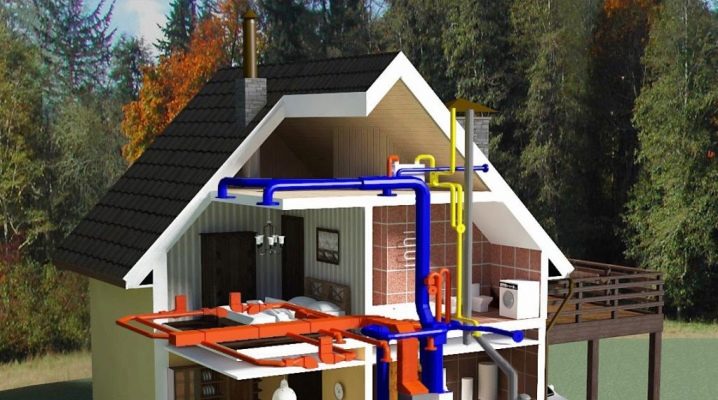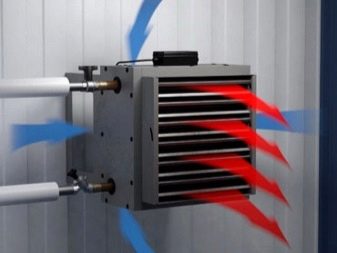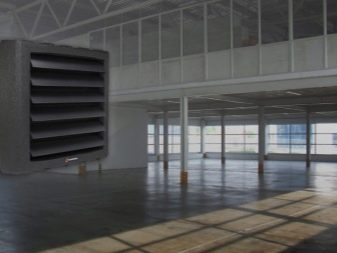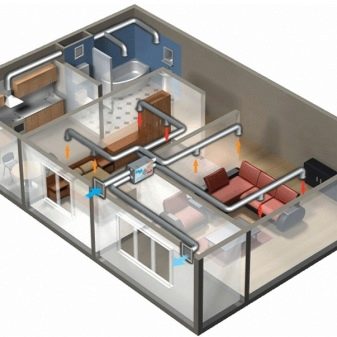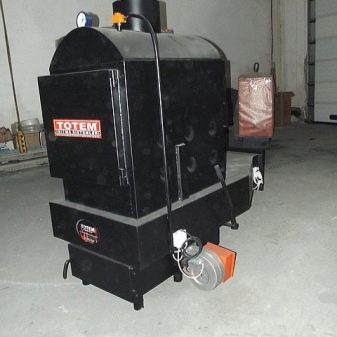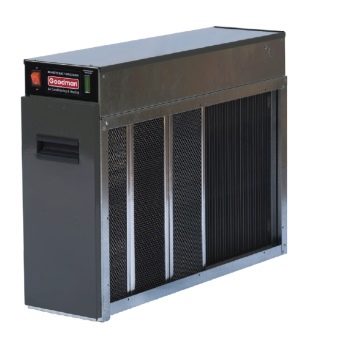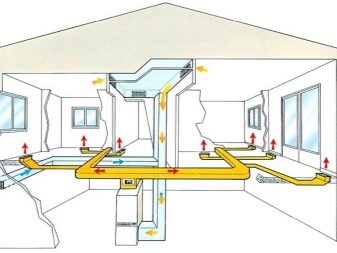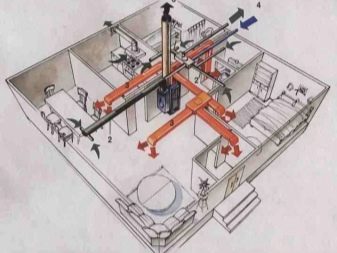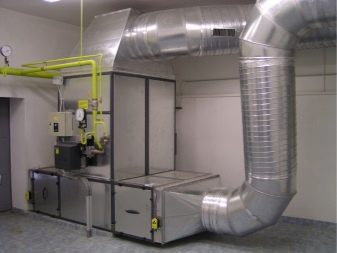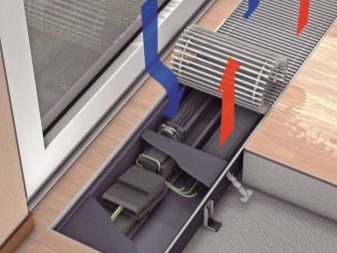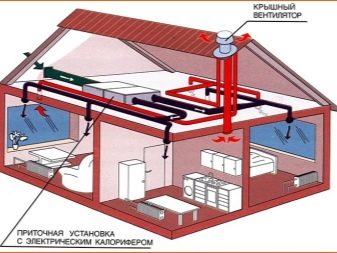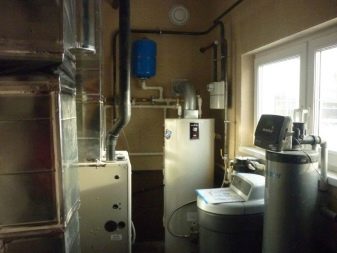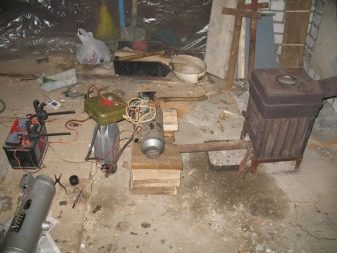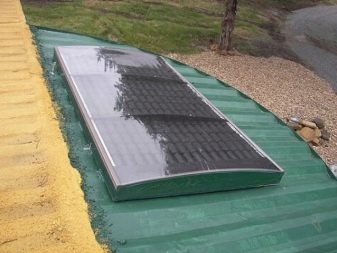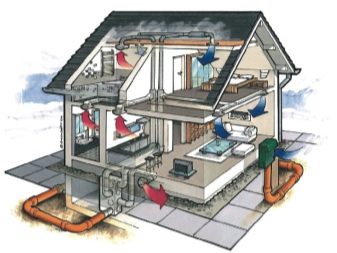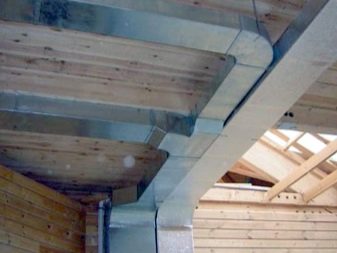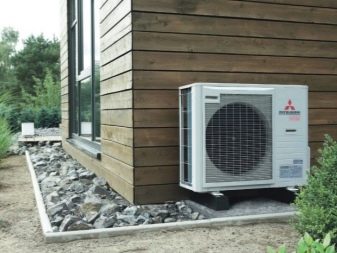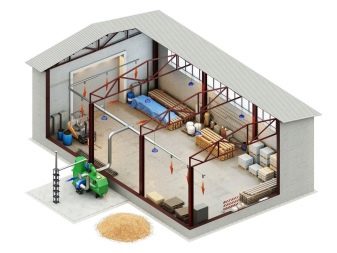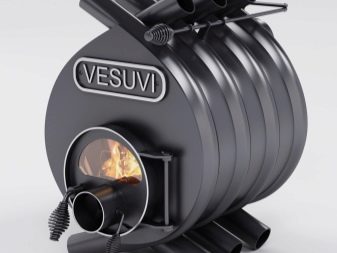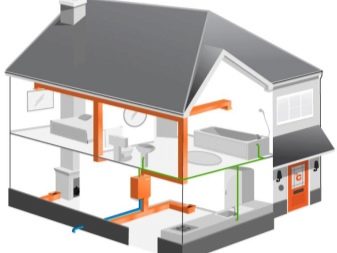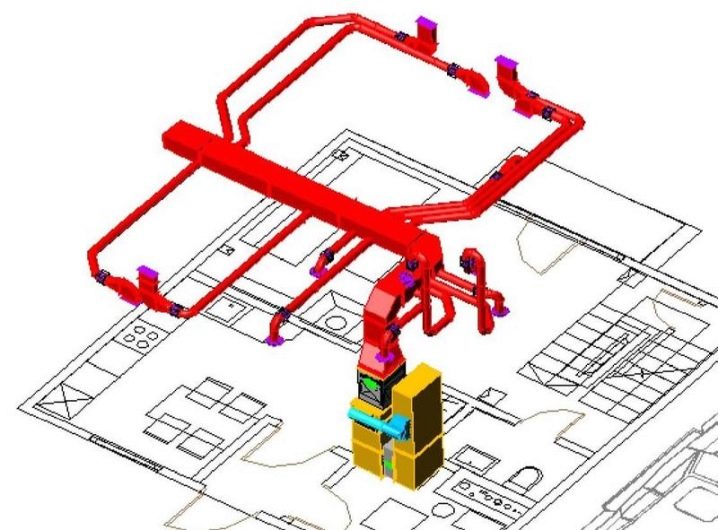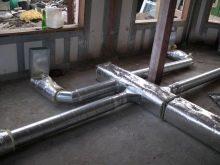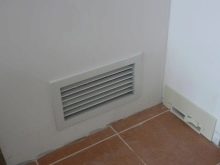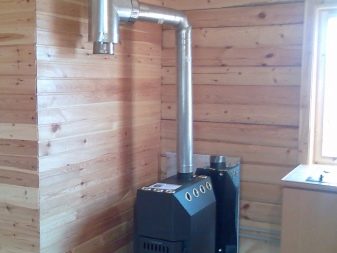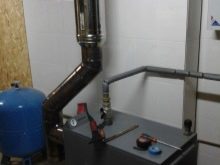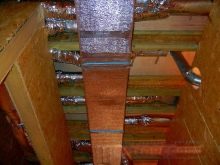Air heating: what is it, how is it calculated and arranged?
The construction of a private house provides not only modern planning of the rooms, but also the installation of such important communications as water supply, sewage and heating, as they are the main components for a comfortable stay. Today, different systems are used for space heating, but air heating, which is considered one of the safest and most economical, is very popular among them.
Its installation is not particularly difficult, so you can easily do it yourself in a city apartment or in a country cottage.
Description
Air heating is a modern system of thermoregulation, which ensures the supply of warm air into the room. Unlike other types of heating such installation has many advantages.It prevails over radiator and furnace heating, so it is often chosen for a private house.
The air system consists of various components, the main ones of which are:
- network of channels responsible for the transfer of heated air to all rooms of the building;
- heat generator or water heater;
- fans that control the passage of air masses through the house;
- air filters.
In addition, the design of the heat exchanger also includes a special combustion chamber. Heat generators are floor and wall type, some of their models can be installed outdoors. The device in the sectional design usually produces power up to 100 kW, and in the monoblock - up to 400 kW. Since the heat generator can work on liquid, solid fuel and natural gas, the air heating is ideal not only for apartments, but also for suburban housing.
How it works?
The principle of operation of the air system is built on the use of a heat generator, in the heat exchanger of which the air is heated to the optimum performance of 50-60С. Then the hot streams through the duct are distributed and move into the rooms, heating them evenly.The system also has in its design special holes in the form of gratings mounted in walls or floors. Through them, the cooled air flows back to the heat generator using air ducts. Thus, it can be said that such a device acts simultaneously as a heating element, a fan and a heat exchanger.
Air systems often operate using a heat pump or gas burner., but sometimes air is heated by hot water coming from central communications. The rate of space heating, as a rule, depends on their size. Therefore, the air flow rate can be from 1000 to 4000 m3 per hour, provided that the pressure in the system has a figure not lower than 150 Pa. In order to minimize heat losses in large rooms, the device is supplemented with auxiliary thermal elements. In addition, it is recommended to install air ducts with a length of up to 30 m, they shorten the path of air passage, keeping its temperature.
The operational effect of the system is also enhanced by the installation of air conditioning units. Thanks to this scheme, during the cold season, the rooms will warm up well and cool in summer. This will allow maintaining a constant microclimate favorable for living in the house.
Air heating can be combined with heating on solid fuels. Work of both systems will provide fast and high-quality heating of rooms, saving energy resources.
Kinds
Today, there are many types of air heating, which, in addition to heating the premises, also perform the functions of humidification, cleaning, ventilation and air conditioning.
Depending on the method of laying networks, systems are classified into two types.
- Suspended. The air ducts in this case are laid directly on the ceiling surface, and the air is fed from the top down.
- Outdoor. The device is installed in the floor construction around the perimeter of the room. This configuration is the most profitable, as it allows not only to save space, but also provides access to warm air directly to the living area.
By type of air circulation, there are two variants of systems.
- Natural. The principle of circulation of heat flow is based on convection movement. Heat masses are located in the upper part of the room, as their place is taken by heavy cold air. The main advantage of such a scheme is considered to be full non-volatility, and the minus is possible instability and low temperature of heating of certain parts of the room.
- Pressure head The circulation of heat in this case occurs due to the operation of the fans, the working pressure range is set depending on the size of the room and ranges from 100 to 2000 Pa. The advantage of the system is stable operation, rapid heating and maneuverability, but heating is directly dependent on the supply of electrical energy. According to the Canadian method, these configurations are combined with fresh air ventilation. This increases their efficiency and heat transfer.
Since heat exchange in air heating can occur in various ways, the systems are divided into direct-flow, recirculation and combined.
- Direct-flow. Combine ventilation and heating at the same time. The air enters the device outside the room, after which it reaches the desired temperature and is transferred to the heating zone. The rooms achieved high rates of microclimate, but there is a huge fuel consumption.
- Recycle. Based on work in a closed loop. Cold streams are taken from the rooms, heated, and then transferred back into it. The system is considered the best option for heating, as it is characterized by high rates of air heating and minimal fuel consumption.
- Combined. Heating includes both direct-flow and recirculation complex. Thanks to this integration, the air flow is constantly filled with new heated masses.
In addition, air heating can be different source of energy, depending on which it has a different efficiency.
- Electric air heating works at the expense of an expensive resource of electric power, this is its main drawback.
- Gas is much more economical, but for the installation of systems requires a special highway.
- Its counterpart - gas-air heating - has also successfully established itself as high performance and fast heating, which requires not only natural gas, but also additional installations.
- The most affordable and practically “free” is considered to be solar air heating, which operates on the basis of the energy of sunlight and heat.
Advantages and disadvantages
Modern heating systems have many drawbacks, which is why it forces homeowners to look for more economical and efficient options. Among the huge choice of heating systems, special attention should be paid to air heating, which is intended for both residential and industrial, administrative premises.
This type of heating has received positive feedback due to its numerous advantages.
- Easy installation. No need to install batteries and pipes for heating.
- High efficiency.
- The ability to combine multiple complexes simultaneously. In a private house, heating and air conditioning are often combined.
- Safety operation. All new systems are provided with automation, which controls the operation of the equipment. In the event of a device failure, special regulators shut off the installation, thereby avoiding the danger of leakage.
- Energy savings. Such heating is affordable, and its installation quickly pays for itself.
- Aesthetic look. Thanks to the convenient placement of installations, housing does not lose free space, and it can be designed for any design.
- Ease of use. All work processes of the system, starting from the start and ending with its stopping, are carried out automatically. Therefore, the human factor is reduced to zero.
- Reliability and durability. If the heating project is made correctly and the installation is completed without errors, the installation will serve without accidents for at least 25 years.
As for the cons, there are not many of them. Such systems require regular maintenance and are fully volatile. This is especially true of equipment that is powered by electrical energy.
In order to ensure uninterrupted operation, in this case it is recommended to additionally install self-contained power.
How to calculate?
Before you install air heating, you need to make an exact calculation. It is best to entrust experienced professionals.
If all the work on calculations and design are done independently, then the following indicators should be considered for them:
- power and type of heat heater;
- heat loss of each room;
- pipeline section;
- the right amount of heated air;
- system pressure.
Correctly calculate the price of heating and installation, regardless of whether the system will be used for a cottage or apartment, a simple example will help, calculations for which are given below.
- First, determine what will be the heat loss in the room. Then, knowing these indicators, you can find the flow of warm air by the formula: G = Qp: (s × (tg - tb)), where c is the heat capacity, tr is the inflow of heated air, tb is the room temperature. Before calculating, you also need to know the air exchange rate for this type of building.
- The next step will be the choice of power heater. In this case, we must not forget that the heating will depend directly on ventilation.
- Then a calculation is made of the number of ventilation grids and the speed of transmission of heated streams.
- An important point will be the aerodynamic calculation, which is determined depending on the cross-section of main pipelines.
How to arrange?
To date, there are many companies engaged in the installation of air heating, but at will it is quite realistic to do it yourself. Since the device provides full automation, it is important not only to choose the right, but also to connect the equipment.
In the first place for air heating you need to purchase the necessary elements.
- Heater. It is chosen, taking into account fuel consumption and the area of the room where heating is planned. It can be either a gas burner or a fireplace with an air circuit.
- Air ducts. They are designed for air circulation and are rigid or flexible. It is best to buy galvanized steel elbows. Depending on the project should also stock up on adapters for pipes.
- The grilles are responsible for the intake and supply of air.
- Sealant for sealing joints in air ducts.
Once all the components of the system are ready, you can proceed directly to the installation, which requires adherence to a strict sequence:
- installation of the heat exchanger chamber and boiler;
- fan mount;
- placement of air ducts;
- insulation and insulation of all channels;
- output system to the street.
Since the boiler is the main component of the installation, it is necessary to treat its installation responsibly, after selecting a suitable place for it. Typically, the heater is placed in basements or closets.
The assembly must be carried out according to the instructions for the device. After the boiler is assembled, it is connected to the trunk lines.
Then you need to equip the chimney, which is often performed from sheets of tin. A heat exchanger is installed above the air duct on top, and a fan is under the combustion chamber below. To the chimney also down the back side of the pipeline. As for the layout of air intakes in the room, then it begins with connecting the box to the highway. Then a pipe is laid, which will be responsible for the return thrust in the system, its diameter must be greater than the diameter of the branched channels.
Completing the installation with insulation sleeves, insulation is needed to protect against moisture and condensation. After that, a special valve is inserted into the installed pipeline, which will be responsible for adjusting the volume of fresh air supply. When all the installation work has been completed, the system components have been docked, the decorative finish is started, hiding the pipes in the boxes.
Tips and tricks
In order for the air heating system to reliably last a long time, it should be pre-calculated and installed according to the project.
If the owners themselves do the installation, they should consider the following recommendations.
- Fix and seal the joints of the pipeline, preferably aluminum tape. It is durable and provides reliable reinforcement coating. The pipes are usually fixed to the ceiling with clamps.
- Air outlets must be placed as low as possible to the floor. If you do not, then it will be cold.
- If the building has air conditioning, then it is important to insulate all its constituent structures, otherwise condensation and evaporation may form.
- Intake sleeves must be installed with a minimum number of bends and knees, this will help avoid heat loss.
- Filters can be additionally installed to clean the air, but they will increase the costs of the entire system. Therefore, you first need to calculate everything and determine their benefits.
Tips for arranging air heating in a private house - in the next video.
